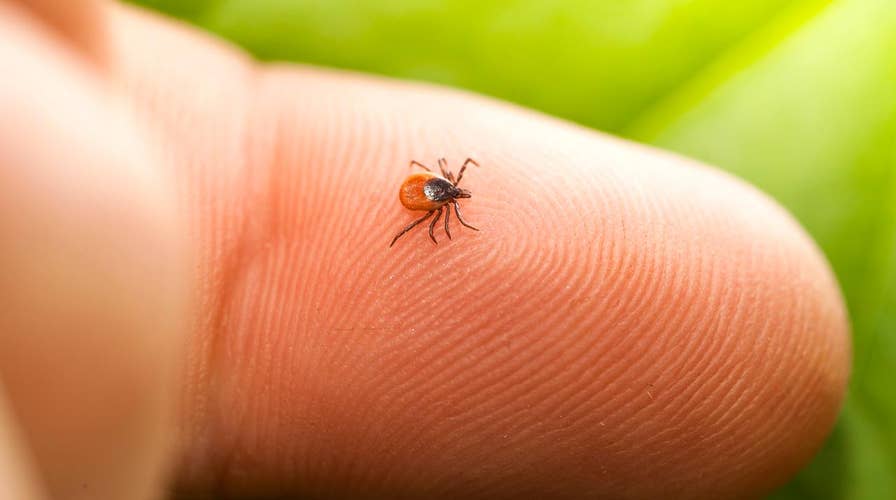What is Powassan disease?
A rare and life-threatening tick-borne virus is worrying doctors. What is Powassan disease and how can you keep yourself safe?
Experts predict that 2017 will bring the highest number of ticks seen in years, according to the U.S. Department of Agriculture. That’s due in part to warmer-than-usual temperatures, preventing some of the ticks from dying over the winter—and providing ample feeding opportunities for their larvae so the population can grow.
More ticks can mean more health woes, since tickborne illnesses like Lyme disease can cause serious—and sometimes chronic issues—including rash, headache, joint pain, fatigue, and numbness or tingling in your extremities. (In fact, one writer explains 8 surprising things that prove Lyme sucks even more than you’d think.)
So it makes sense that you’d want to do what you can to keep the bloodsuckers away from you. But as one new study published in Zoonoses Public Health finds, some things you have inside and around your house might be upping your odds of finding a tick on you.
FAMILY WARNS OF POWASSAN VIRUS MONTH AFTER NEW YORK MAN'S DEATH
In the study of 2,727 households, researchers wanted to see whether owning a pet raised the likelihood of bringing ticks to humans. They discovered that households with a dog or a cat were nearly twice as likely to report finding a tick crawling on any one member, and about 50 percent more likely to say they’ve actually noticed a tick attached to someone in their family.
In fact, 31 percent of households with pets said they saw ticks crawling on their human members, compared to 20 percent of those without pets. And 19 percent of pet owners reported actually seeing a tick attached, compared to 14 percent of no-pet households.
The big problem with ticks doesn’t really come from them crawling on you—the ticks need to be attached to you for a fair amount of time in order for them to transmit germs in their saliva, like the bacteria that cause Lyme, says Thomas Mather, Ph.D., director of TickEncounter Resource Center at the University of Rhode Island, who was not involved in the study. In most cases, ticks need to be attached to you for 36 to 48 hours to transmit Lyme bacteria.
Interesting, the study found that use of tick control meds on the pets didn’t help cut the chances of finding ticks on or attached to humans.
But animals weren’t the only things that were upping the odds of finding a tick—factors around your home could play a role, too.
EXACTLY WHAT TO DO IF YOU GET A TICK BITE
Households with a vegetable garden, flower garden, compost pile, log pile, bird feeder, stone wall, children’s play equipment, or an outdoor sitting area were more likely to report finding a tick crawling on a human member—or finding it attached to one—than those whose homes did not have those features.
Pets may bring ticks on to the property, and people with pets may be more likely to engage in outdoor activities that bring the owners in greater potential contact with the tick habitat, possibly upping their risk, the study authors say. And things like birdfeeders can attract rodents to the property, which may introduce ticks as well.
Now, the main purpose of the study was to look at whether pet ownership upped the odds of human tick transmission. The researchers included the home factors in their analysis as potential confounders that could be influencing the relationship between pets and ticks. So while the study did show a link between property features and ticks, further independent investigation on them is necessary, the authors say.
Also, it’s important to note that having pets or finding ticks on pets was not linked to an increase in human tickborne disease, according to the study. But the researchers believe that could be due to a small number of verified tickborne illness in the participants overall—a separate analysis from the same data does suggest that the self-reported tick encounters can be considered a good proxy for tickborne disease risk.
In the meantime, the best way to keep yourself safe from ticks is to play the preventive game: Spray yourself with a DEET insect repellant (like OFF! Deep Woods Sportsman) before going into a wooded area, and perform a tick check when you come inside. Ticks love moist skin folds, so pay close attention to under your arms, inside your belly button, and between your legs, the Centers for Disease Control and Prevention advises.
And if you see a tick on you, forget hyped tick-removal methods like using peppermint oil. Use the tried-and-true method of tweezing out the bugger, says Mathers. With a pair of fine-point tweezers like TickEase, grab the tick as close to your skin as you can. Pull upward slowly until it pops out. (For more health news delivered right to your inbox, sign up for our Daily Dose newsletter.)
This article first appeared on Men's Health.

